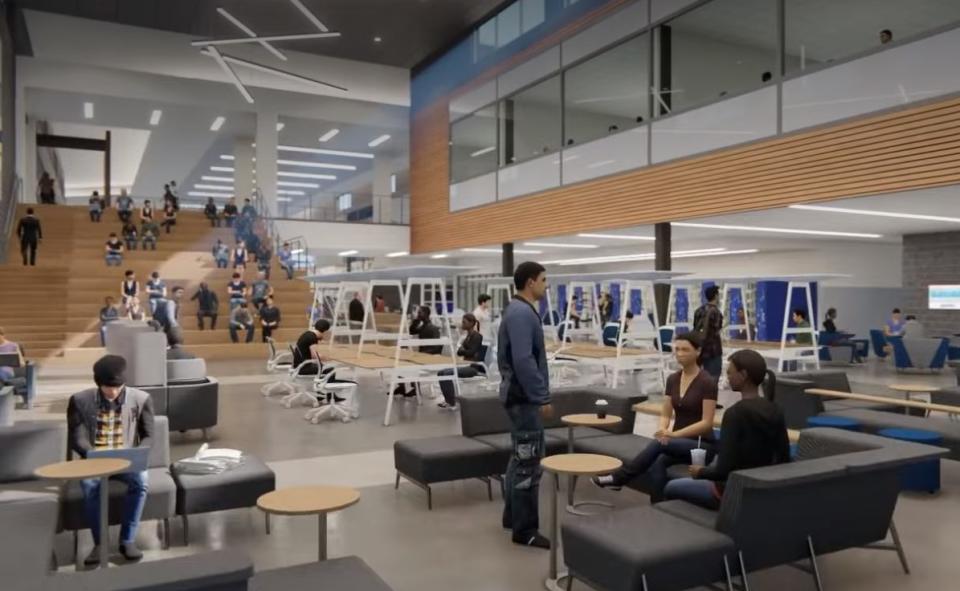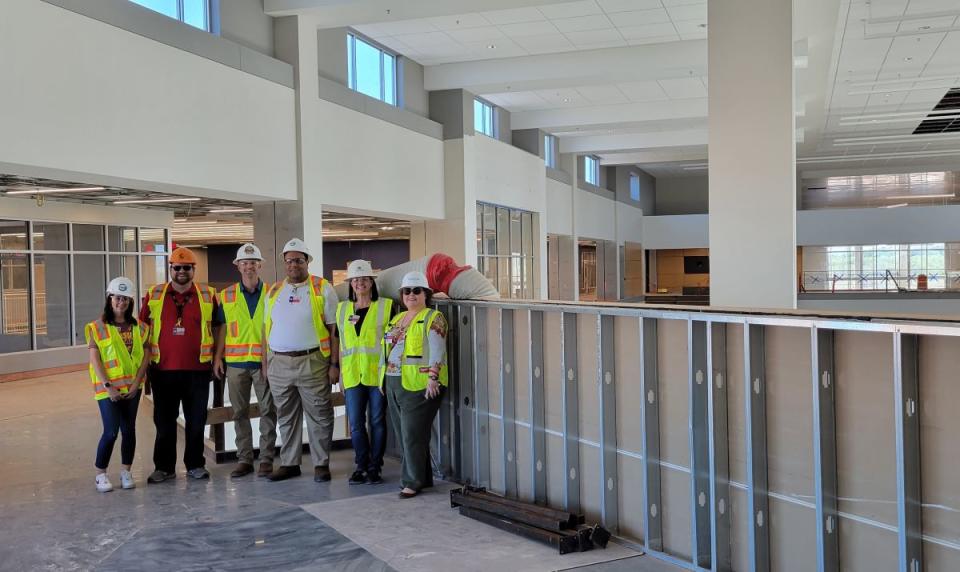Designing New High Schools to Be Flexible Learning Spaces: What School Leaders Need to Know

The landscape of today’s education has changed, with research leading to even more importance placed on the environment in which students learn.
“Since the advent of COVID, the need for more flexibility for the post-graduation world became evident with online learning, online working, mobile workspaces, and working from home,” says Dr. Peter Griffiths, a recipient of the Tech & Learning Innovative Leader Award and Associate Superintendent for Wichita Falls ISD, which will be opening two new high schools in 2024. “Schools need to be designed to prepare students for that new world. That includes a different approach to building schools, delivering lessons, and classroom management.”
Griffiths discusses the benefits of flexible learning spaces and what districts need to know to create an ideal setting for academic success.
Flexible Learning Space, What It Means
The concept of a flexible learning space is more than a simple static physical change of design to the traditional four walls-and-a-door classroom.
“What makes the new design exciting is you might have spaces with a ‘lab’ in the middle of two classrooms, allowing it to be utilized either as one large classroom or two separate classrooms. Collapse a wall and now you have a larger space, or keep the wall closed and you have two divided classrooms,” says Griffiths. “A teacher with a standard ELA 3 class with 25 students has different needs than the same teacher with an Advanced Placement class with only 12 students, so a smaller collaboration space can be used rather than the larger classroom. The flexibility allows better utilization of the campus.”
Budget Saver or Budget Buster?
One might wonder if this type of cutting-edge design is only available to deep-pocketed districts, but more efficient utilization can improve strains on a school budget while improving the experience of the learner.
“The entire building is built with 30% of the students to be off the campus at different times of the day, reducing the cost of the building footprint and lowering the cost of construction,” says Griffiths. “WFISD has a Career Education Center, which may pull about 20% of the students while another 9% will be at the two colleges working on Dual Credit courses, and the remaining 1% to be off campus working online.”
Tech is another consideration. Common spaces can be designed for students to work online during certain times of the day rather than taking up valuable classroom space. Classrooms outfitted with mobile interactive monitors can be moved anywhere in that room or hallway, rather than the static LCD projector and screen. This allows more flexibility and better student usage, and can reduce the systems needed while offering the same access to technology.

3 Actionable Steps to Create Ideal Flexible Learning Spaces
To create a learning environment that is flexible and able to change, conversations of the purpose of the building need to be about adaptability and growth.
The furniture needs to meet the needs of the flexibility. That includes desks/tables and chairs on wheels when appropriate, to allow changes in the classroom look. Desks/tables should also have the ability to nest and stack easily to move out of the way or be stored.
Training needs to be provided for engaging classroom management to allow teachers to develop different ways to teach. This would include allowing teachers to take calculated risks in the classroom and allow for controlled chaos and movement.
Convincing Stakeholders, Success in Practice
A big argument for creating unique learning spaces for high school students is to add excitement to the learning day. Burnout and lowered engagement have become common challenges in the wake of the COVID-19 pandemic. Griffiths notes that students with more freedom on how instruction is delivered to them–including different provided spaces and opportunities–enjoy a more personalized and motivational learning environment.
“When ‘structured’ flexibility is created, it can allow the engagement to happen within boundaries. Stations can be created,” says Griffiths. “‘You three work in a group in this corner, you five can pull the interactive monitor to your group, you ten go outside to the Collab Space to finish the project, and the rest of you follow me to the lab. We have 10 minutes in each station.’ Now you just created an engaging environment for all the kids with movement and changes in atmosphere that make it more exciting. The days of sit-and-get will need to change.”
Flexibility in Design Changes with the Times
The fundamental purpose of education is to develop productive members of society. Thus, schools must adapt to the needs of the ever-changing world. Creating campuses that allow for that flexibility is key.
“The days in which a district can expect all the students who live near the school will attend the school are over,” says Griffiths. “Parents and students have more choices—be it a charter, private, home, or online schooling—to educate their child. What we must do is to ensure that experiences students have at our schools are exciting and engaging. We want them to develop positive memories and prepare them to be ready for a world that is focused on adaptability as a necessary skill to succeed.”
